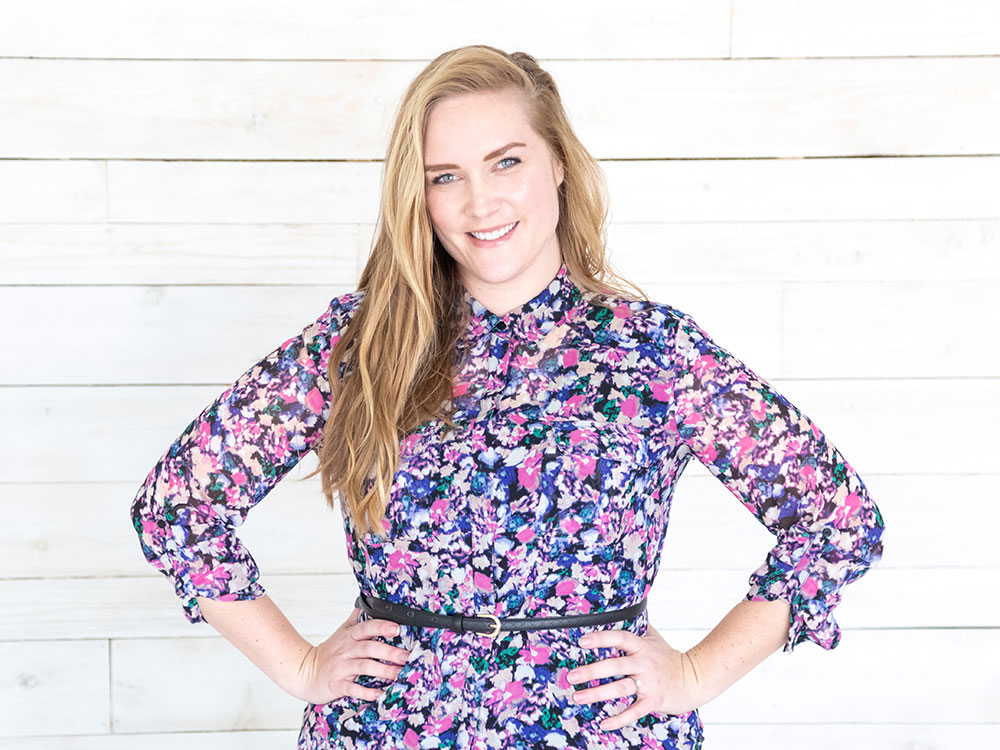Breadcrumb

Updated May 2022
From time to time, HCI invites guest commentary from our community. The views reflected in these commentaries are those of the author and do not necessarily represent the official views of HCI.
In 2014, Dr. Lexie Kite was diagnosed with melanoma at Huntsman Cancer Institute. She has been cancer free since surgery on her 29th birthday, and is committed to helping people embrace the skin they have. Lexie wrote the following post after her diagnosis. She and her twin sister, Lindsay, are co-authors of the book More Than a Body: Your Body Is an Instrument, Not an Ornament (2020, Harper Collins) and co-directors of the nonprofit Beauty Redefined. Lindsay and Lexie are leading experts in the field of body image resilience and media literacy. They help girls and women recognize and reject the harmful effects of objectification through social media, speaking engagements, their online Body Image Resilience course, and their popular book.
I used to be one of the girls who believed tan skin is more beautiful. I used tanning beds. I laid out at the pool without reapplying sunscreen.
If I could, I would beg my younger self to do things differently. I would shout to her what I shout to the world now: Don’t buy the lie that your value and power depend on your looks. Life is much too precious to be cut short by skin cancer. That is abundantly clear after being diagnosed with melanoma—the deadliest form of skin cancer—at age 29.
While I would’ve chosen to be anywhere else on my birthday in 2014, I was at Huntsman Cancer Institute for a pre-surgery appointment. A few days later, I had surgery to remove a large area of my thigh and three lymph nodes that could spread cancer throughout my body.
Fortunately I am now considered cancer-free. Huntsman Cancer Institute is incredible; my nurses and doctors were skilled and put my mind at ease. I will be visiting them every six months for a long time to make sure melanoma doesn’t creep up on me again. But now I feel even more of a responsibility to shout from the rooftops that tan skin is not worth dying for.
The incidence of melanoma in young adults is sky-high, with a six-fold increase in the past 40 years. The rise is by far most noteworthy in young women ages 18-39, where the incidence of melanoma increased eight-fold from 1970-2009, while it increased just four-fold in men.
This is a significant gender-specific finding. There are lots of factors to be taken into consideration regarding the increase in diagnoses, but in the work I do with my twin sister Lindsay through our nonprofit organization, Beauty Redefined, we believe this is a beauty issue. There may be a few causes worth dying for, but having bronzed skin is not one of them.
Where did we get this idea that fair skin is a flaw in need of fixing by desperate means? Tan skin is a manufactured beauty ideal. In the 1980s, this ideal started making the beauty industry lots of money. Turning women from pasty and pathetic to bronzed and beautiful became a brand-new market for the United States and spawned a nationwide influx of indoor tanning salons that saw a revenue of $5 billion in 2012 alone.
I find these stats especially shocking:
- Nearly 70% of tanning salon patrons are Caucasian girls and women, primarily aged 16 to 29 years.
- The U.S. Department of Health and Human Services and the World Health Organization International Agency of Research on Cancer panel has declared ultraviolet (UV) radiation from the sun and artificial sources, such as tanning beds and sun lamps, as a known carcinogen (cancer-causing substance).
- Based on seven worldwide studies, people who first use a tanning bed before age 35 increase their risk for melanoma by 87 percent.
This vicious cycle of "never quite good enough" needs to stop. Join with me to push back against the skin tone ideals that have been manufactured for us and used against us. Let’s own our skin tones. Let’s commit to no more "fake baking." Let’s vow to protect our skin with clothing or sunscreen when we’re out in the sun. Let’s plan to get regular skin checks from a doctor and from self-exams. Let’s live long, healthy, cancer-free lives with our beautiful-as-it-is skin.